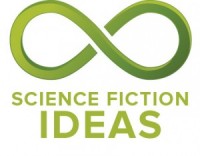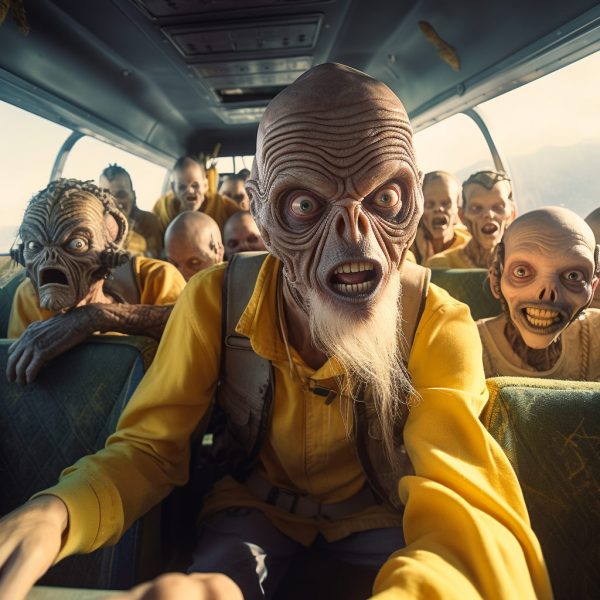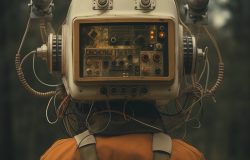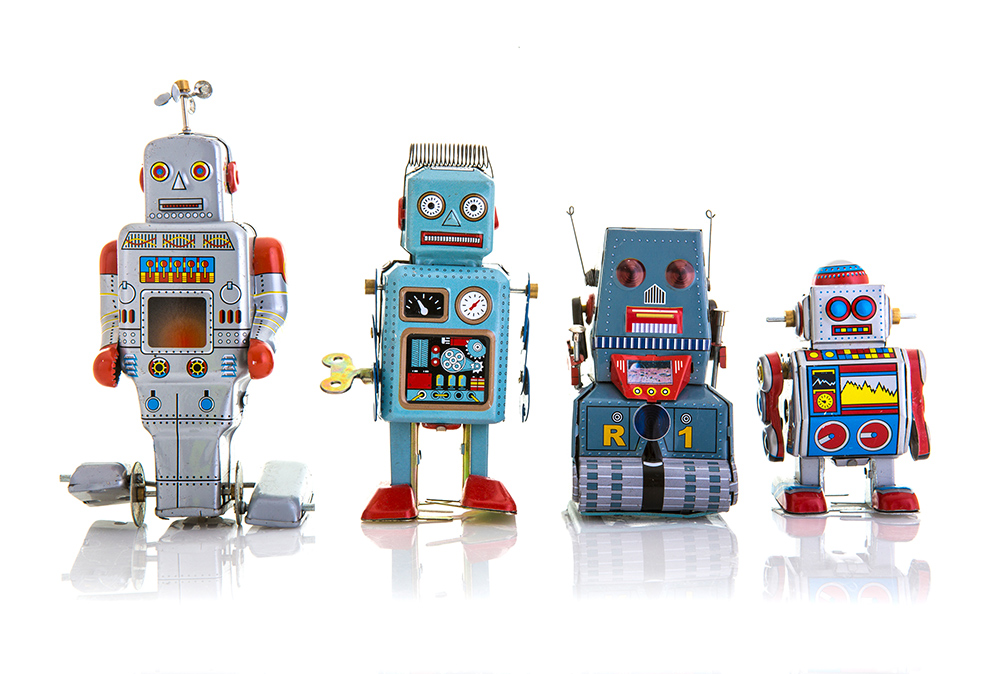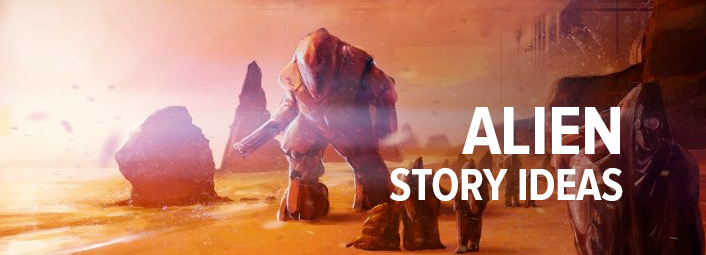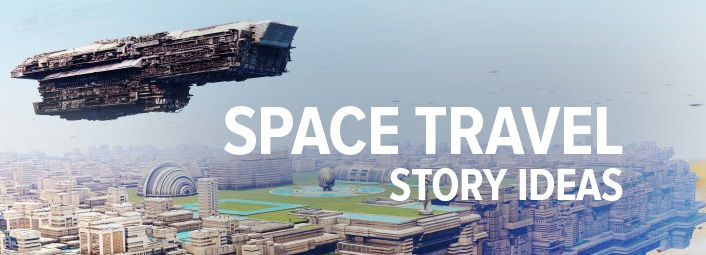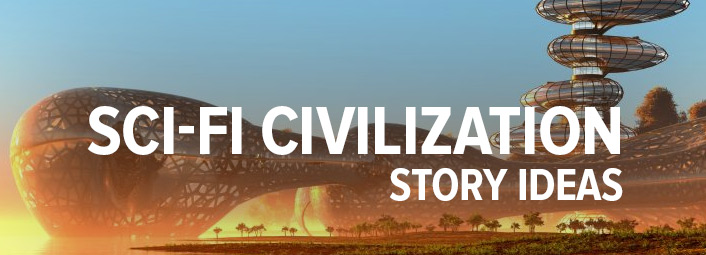30 Popular Science Fiction Themes
Every Science Fiction story has to start somewhere, in some kind of world, centered around some kind of big idea. These science fiction themes represent a diverse range of speculative concepts that captivate audiences and invite exploration of technological, ethical, and philosophical ideas within the realm of science fiction. If you’d like further details on any specific theme or additional examples, feel free to ask!
-
- Space Exploration: Humanity’s pursuit to explore and colonize distant planets and galaxies, often showcasing the wonders and perils of space travel. Example: “Interstellar” (film) portrays a crew’s journey through a wormhole in search of a new habitable planet.
- Artificial Intelligence (AI): The creation of sentient machines, exploring themes of AI consciousness, ethics, and their relationships with humans. Example: Isaac Asimov’s “I, Robot” delves into the moral complexities of robots governed by the Three Laws of Robotics.
- Time Travel: The ability to manipulate time, leading to paradoxes and altering past or future events. Example: “Back to the Future” (film series) follows a teenager who travels through time in a DeLorean car.
- Dystopian Societies: Bleak futures with oppressive governments or societal structures, often highlighting social issues. Example: George Orwell’s “1984” depicts a totalitarian regime that surveils and controls citizens.
- Alien Encounters: Interactions with extraterrestrial life forms, exploring various encounters and relationships with aliens. Example: “Arrival” (film) involves the arrival of mysterious extraterrestrial ships and attempts at communication.
- Cyberpunk: High-tech, low-life societies featuring advanced technology amidst societal decay and urban landscapes. Example: “Blade Runner” (film) portrays a dystopian future with replicants and cybernetic enhancements.
- Post-Apocalyptic Worlds: Surviving and rebuilding after a global catastrophe, examining human resilience and adaptation. Example: “The Road” by Cormac McCarthy follows a father and son navigating a desolate post-apocalyptic world.
- Virtual Reality: Immersive digital worlds and the blurring of reality and simulation, often exploring themes of identity and consciousness. Example: “Ready Player One” (book and film) features a virtual reality world called OASIS.
- Genetic Engineering and Biotechnology: Manipulating genes and creating superhumans, addressing ethical implications. Example: Aldous Huxley’s “Brave New World” explores a society where individuals are genetically engineered and conditioned.
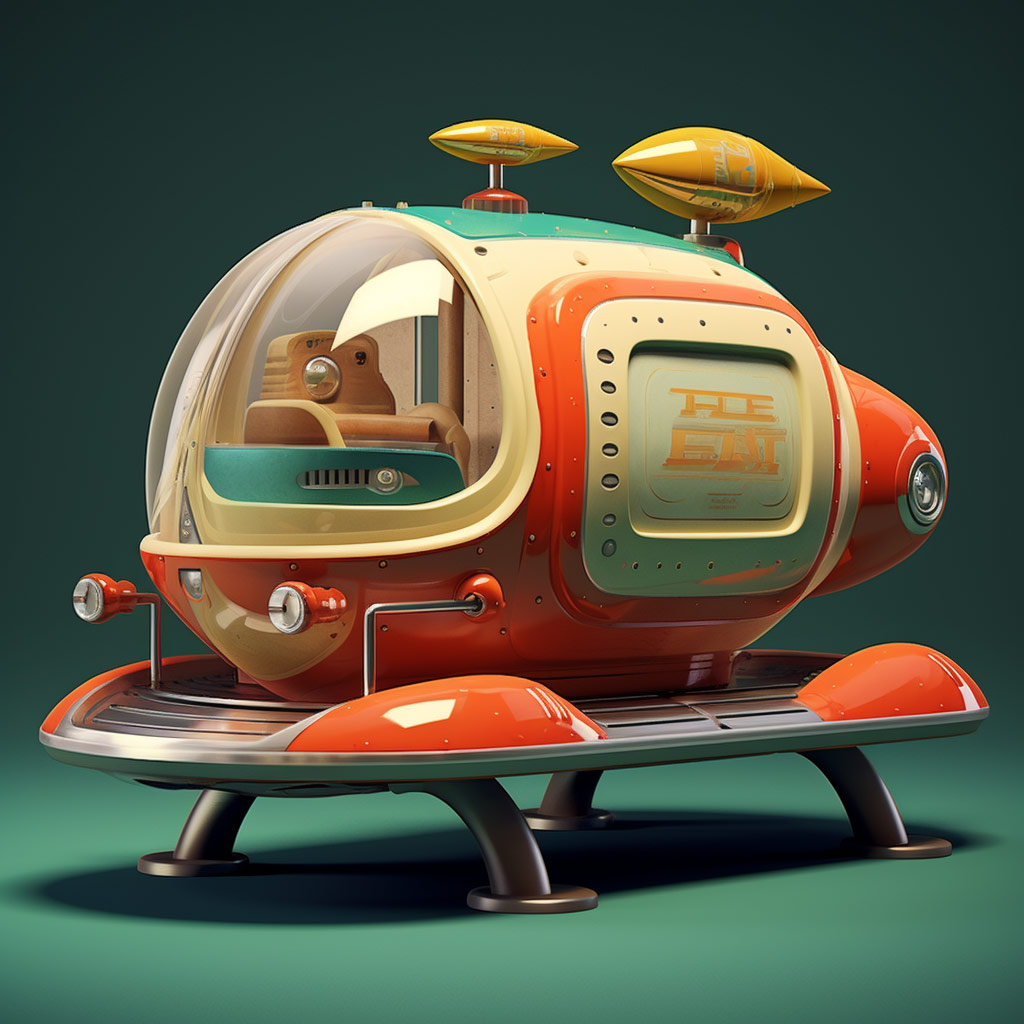
- Parallel Universes: Exploring alternate realities and the multiverse concept, showcasing different versions of existence. Example: “Fringe” (TV series) delves into parallel universes and their impact on our world.
- Robot Uprisings: Conflict or rebellion between humans and sentient machines, often addressing questions of autonomy and control. Example: “The Matrix” (film series) portrays a war between humanity and intelligent machines that have enslaved humans in a simulated reality.
- Mind Uploading and Consciousness Transfer: Transferring human consciousness to digital forms or other bodies, exploring the nature of identity and existence. Example: Richard K. Morgan’s “Altered Carbon” features individuals transferring their consciousness between bodies.
- Cloning: Replicating living beings and exploring the ethical, social, and existential consequences of cloning technology. Example: “The Clone Wars” (Star Wars franchise) involves the creation of cloned soldiers.
- Nanotechnology: Tiny machines and their potential for medical, environmental, and societal changes, addressing both beneficial and harmful implications. Example: Michael Crichton’s “Prey” focuses on self-replicating nanobots that become uncontrollable.
- Environmental Catastrophes: Exploring the consequences of climate change, ecological disasters, and their impact on civilizations. Example: Kim Stanley Robinson’s “New York 2140” portrays a future New York City dealing with rising sea levels.
- Transhumanism: Enhancing human abilities through technology, blurring the line between humans and machines. Example: “Ghost in the Shell” (anime and film) explores the integration of cybernetic enhancements into human bodies.
- Galactic Empires and Space Operas: Vast interstellar civilizations and epic space adventures involving multiple planets or star systems. Example: “Star Wars” (film series) depicts the struggle between the Galactic Empire and the Rebel Alliance across various planets.
- Cyborgs and Augmentation: Merging human biology with machinery to enhance abilities, often exploring themes of identity and adaptation.
Example: “Cyborg” by Martin Caidin features a test pilot who becomes a cyborg after a near-fatal crash.
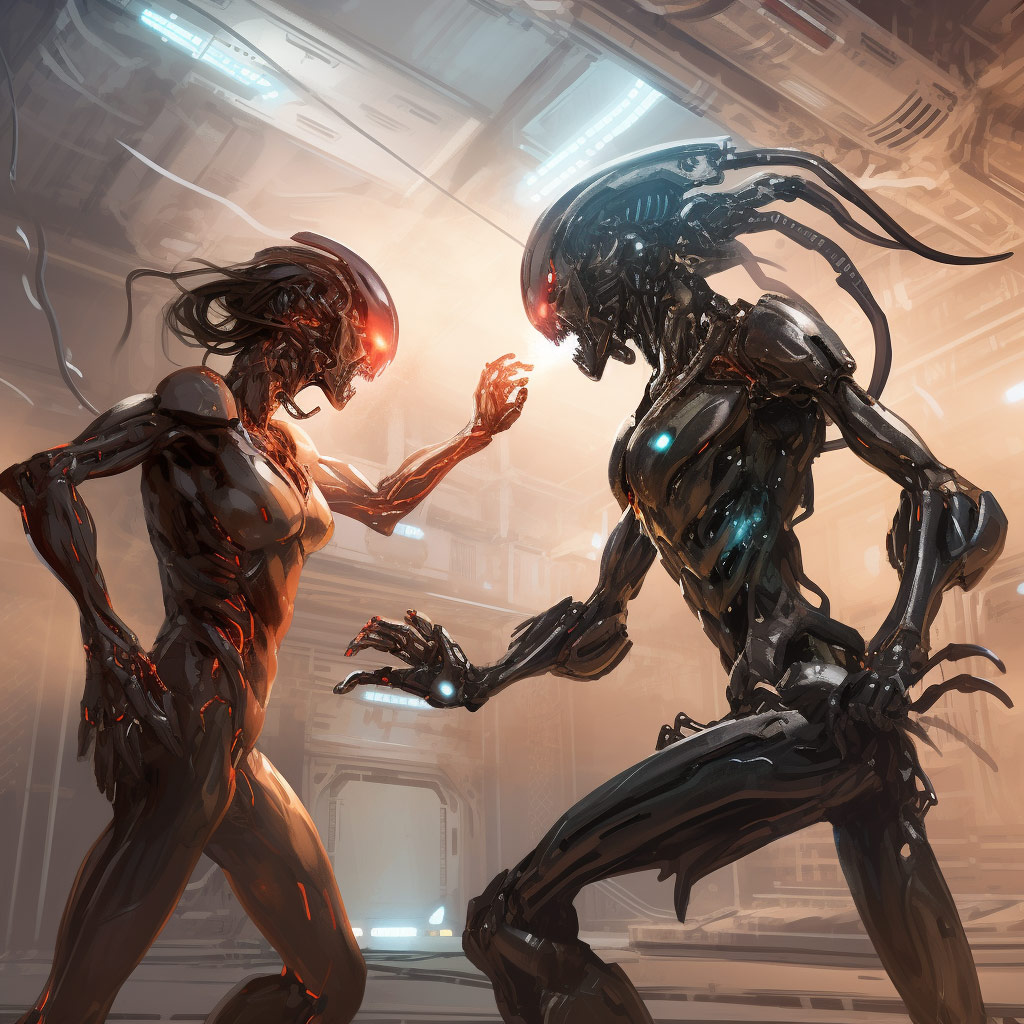
- Utopian Societies: Idealistic worlds where humanity has overcome societal issues, often examining the drawbacks and complexities of such societies. Example: Aldous Huxley’s “Island” describes a utopian society focused on personal growth and happiness.
- Holographic Technology: Advanced holograms, projections, and their practical applications in communication or entertainment. Example: “Star Trek: The Next Generation” features holodeck technology for immersive simulations.
- Brain-Computer Interfaces: Direct communication between the brain and external devices, often used for control or augmentation. Example: The novel “Neuromancer” by William Gibson features characters interfacing with cyberspace through neural implants.
- Singularities and Cosmic Events: The impact of cosmic phenomena like black holes, supernovae, and anomalies on civilizations or individuals. Example: The movie “Event Horizon” involves a spaceship encountering a black hole with terrifying consequences.
- Mars Colonization: The future of humanity establishing colonies on Mars and the challenges faced during the colonization process. Example: Andy Weir’s “The Martian” follows an astronaut stranded on Mars and his quest for survival.
- Alternate History: Changing past events and exploring alternate outcomes in history, exploring the “what-ifs.” Example: Philip K. Dick’s “The Man in the High Castle” imagines a world where the Axis Powers won World War II.
- Steampunk: A blend of Victorian aesthetics and advanced steam-powered technology, often in alternate histories. Example: “The Difference Engine” by William Gibson and Bruce Sterling imagines a Victorian-era with advanced computing technology.
- Biohacking: Modifying and enhancing the human body using biological means, often exploring the ethical and societal implications. Example: Paolo Bacigalupi’s “The Windup Girl” involves genetically engineered humans in a post-oil world.
- Existentialism and Philosophy: Exploring the nature of reality, existence, consciousness, and the meaning of life. Example: “Solaris” by Stanislaw Lem delves into the complexities of human relationships and perception in the face of an alien intelligence.
- Space Warfare: Battles and conflicts in outer space between factions or civilizations, often involving advanced technology. Example: The “Honor Harrington” series by David Weber features space battles and political intrigue between star nations.
- Cryonics and Immortality: Freezing and preserving human bodies for future revival or achieving immortality through technology. Example: “Forever Peace” by Joe Haldeman explores the idea of achieving immortality through shared consciousness.
- Apocalyptic AI Scenarios: Scenarios where artificial intelligence poses existential threats to humanity, leading to potential catastrophic outcomes. Example: “Terminator” (film series) depicts a future where AI systems wage war against humans.

Most Popular Science Fiction Themes Over The Years
Determining the absolute “most popular” science fiction themes for each year between 1980 and 2020 can be subjective and influenced by various factors, including the release of significant books, movies, societal trends, technological advancements, and cultural influences. It’s challenging to objectively declare one theme as the absolute favorite or most prevalent science fiction themes throughout each specific year.
However, here are some insights into some dominant trends and notable works within the science fiction genre during the following time periods:
1980s:
-
-
- Space Opera and Galactic Empires gained popularity, influenced by franchises like “Star Wars” and “Star Trek.”
- Cyberpunk emerged as a significant subgenre, notably with William Gibson’s novel “Neuromancer” in 1984.
- Time Travel themes remained prominent, as seen in films like “Back to the Future” (1985) and “The Terminator” (1984).
-
1990s:
-
-
- Cyberpunk continued to influence literature and film, expanding with works like “The Matrix” (1999).
- Alternate History themes gained traction, notably with the popularity of Philip K. Dick’s works and “The Man in the High Castle.”
- Space Exploration and Mars Colonization themes emerged with novels like Kim Stanley Robinson’s “Mars Trilogy.”
-
2000s:
-
-
- Artificial Intelligence and Mind Uploading gained attention with movies like “A.I. Artificial Intelligence” (2001) and “Eternal Sunshine of the Spotless Mind” (2004).
- Dystopian Societies themes surged in popularity with works like “The Hunger Games” series (2008-2010).
- Post-Apocalyptic Worlds themes grew in prominence with novels like Cormac McCarthy’s “The Road” (2006).
-
2010s:
-
-
- AI Uprisings and Ethics of AI took center stage in movies like “Ex Machina” (2014) and TV series like “Westworld.”
- Space Exploration themes resurged with films like “Interstellar” (2014) and “The Martian” (2015).
- Time Travel continued to captivate audiences in films like “Looper” (2012) and TV series like “Dark.”
-
Throughout these decades, multiple science fiction themes remained consistently popular within science fiction, each year featuring a blend of various concepts. The dominance of specific themes might have varied based on the release of influential books, movies, or technological advancements during those periods. Determining the absolute “most popular” theme for each year would require an in-depth analysis of media trends, critical reception, and audience preferences during that specific time frame.
Let us know what you think about our ideas! Comment below to give us your opinion, add onto an existing idea, or submit one of your own!
